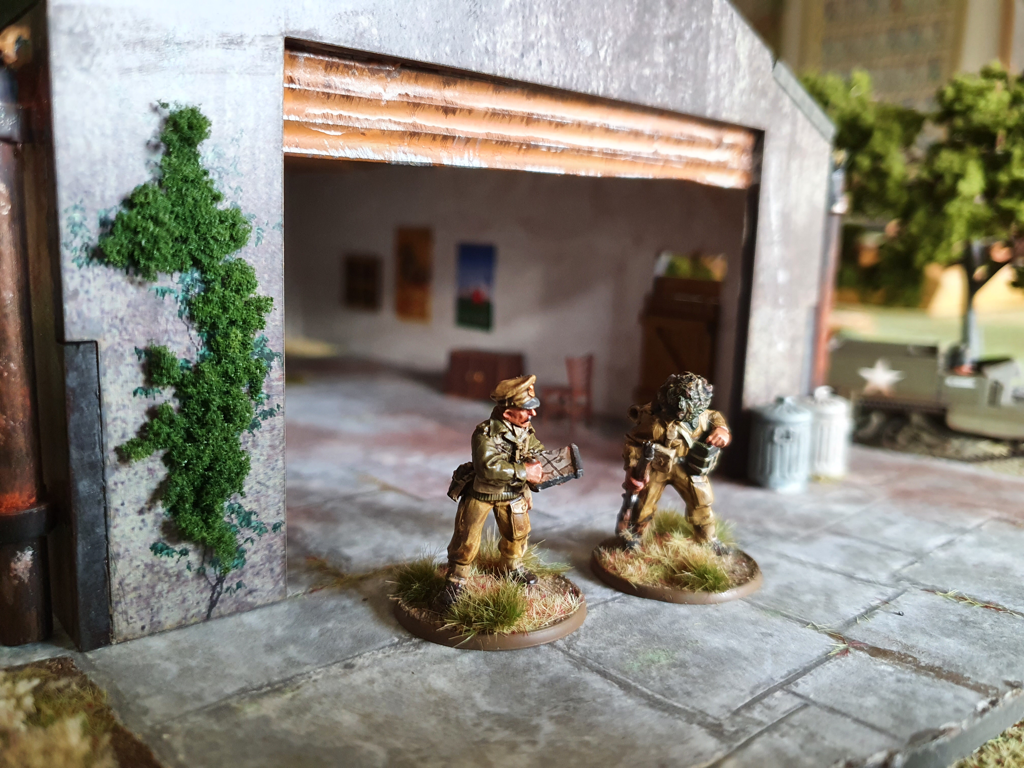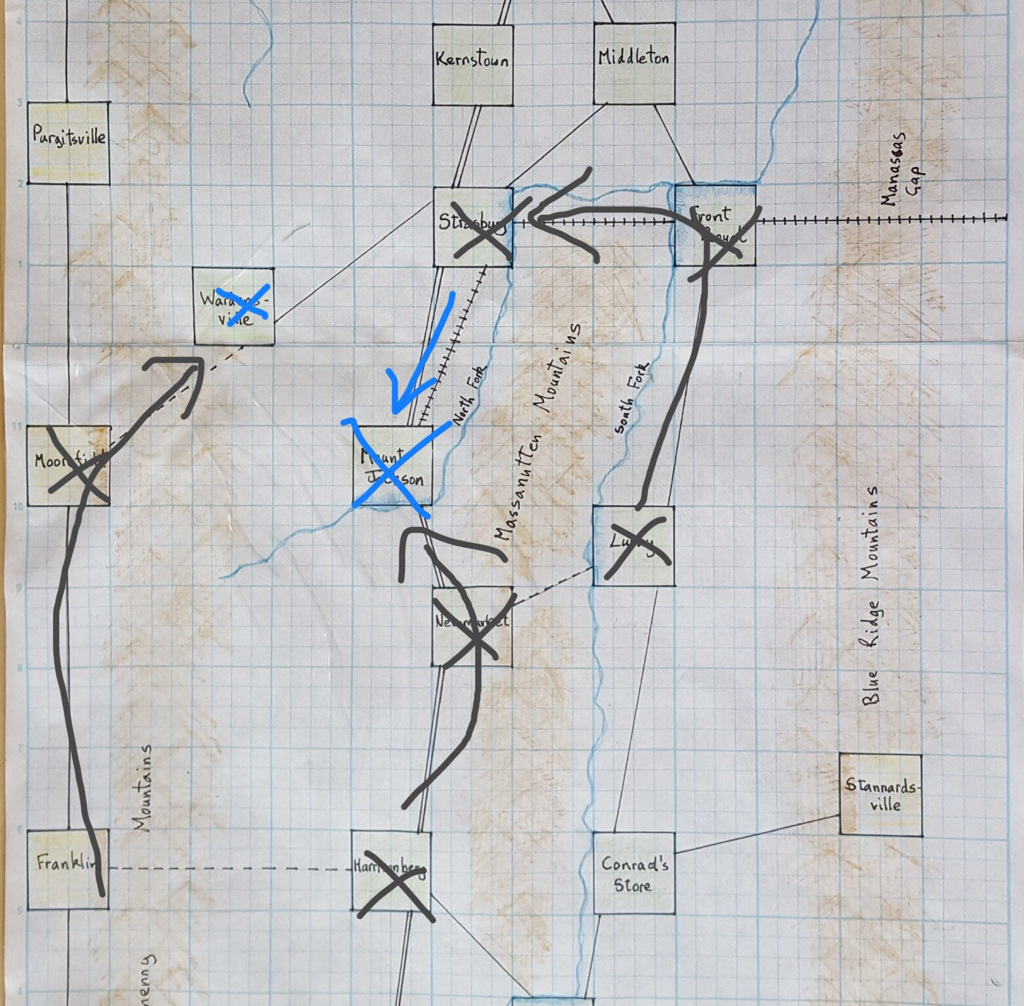|
Reduced by the lockdown to reliving past glories, in my last post I included a link to a Waterloo AAR from 2015. That was the very first report I wrote for this site and I hadn’t yet worked out what readers might find useful, so I didn’t include an order of battle. Steve has asked if I still have this so I have looked out the paperwork from five years ago (remember the golden wargamer’s rule: throw nothing away!).The order of battle, including the reinforcement schedule for the Prussian army, is here.
Among the briefing notes and place names in the file box I found some of the messages exchanged between the players during the game. It brought back the jeopardy of a multi player game. As soon as we reach Defcon 1 and are allowed to mingle again, I am arranging the biggest multi player battle my shed can hold!
0 Comments
The anniversary of Waterloo is usually an excuse for us to arrange a Napoleonic game. In the past few years we have covered Ligny, Plancenoit, D’Erlon’s assault and two full battles of Waterloo. Sadly we’ll have to pass on a face to face game this year. Instead, I have been busy rebasing my 15mm Napoleonics from Napoleon’s Battles to Lasalle, in anticipation of the release of Lasalle 2 at the end of the year. I have chosen 40mm base widths, with four foot or three horse in line per base. I know it isn’t fashionable but I prefer to base infantry in one rank rather than two. I think this is due to my origins in Bruce Quarrie’s 1970s rules: I don’t like the distorted depth that two-rank bases give to a battalion (although my 6mm Napoleonics are in two ranks).
In 2015 I hosted a seven-player refight of Waterloo, which was our first use of Sam Mustafa’s Blücher rules. It was great fun. The report of our game and the preparations for it is here. Our ACW campaign has come to a close, with victory for Jackson. The last two turns of our campaign saw Jackson, played by Matt, gaining a significant advantage over Banks’ forces led by Spencer. In the west, Banks’ attempt to outflank the rebels in the valley, which had been so promising after the battle of Franklin, was thwarted when he withdrew a third of the outflanking force just as Jackson was reinforced. The outflanking force was repulsed at the battle of Harrisonburg and then trapped and nearly annihilated between Jackson’s force and General Johnson’s brigades advancing from McDowell. Meanwhile, in the valley, Banks drew in his forces and advanced to Mount Jackson along the Valley Pike, leaving the Luray valley road in the east uncovered. At just this time, Jackson sent two brigades and a strong cavalry reconnaissance through Luray and Front Royal, to find the federal supply line back to Harper’s Ferry exposed. On turn 5 of the campaign, rebel cavalry occupied Strasburg behind the main federal army and captured rear area troops, ammunition and grain supplies. Before he cut the telegraph, Ashby, commander of the 7th Virginia Cavalry, wired the following message to Banks from Strasburg: “From the officer commanding the Confederate garrison of Strasburg to the General commanding, federal forces. Thank you for provisions and ammunition. There is no need to send more as we now have a proficiency of both. Respectfully, Ashby, Lieutenant, 7th Virginia Cavalry.” (I stole this idea from a French bonapartist pamphlet of 1815, in which Napoleon thanks Louis XVIII for the troops he has sent and says he doesn’t need any more). The closing positions of the active game therefore had Banks at Mount Jackson with his supply line cut, and Jackson, reinforced by Ewell, with forces to the south, east and north of the federal army. Banks was still formidable but Spencer decided at this point that he had been outmanoeuvred and conceded to Matt. I played out the following turn myself, presuming Banks would try to escape encirclement while Jackson would attempt to catch him. The only way Banks could get clear was to retreat all the way back to Winchester, while Jackson ended at Kernstown and Middleton. The Federals were back where they had started the campaign, with one very badly mauled division, the other virtually unbloodied and a great many supplies now equipping the rebels. So Banks is still in the valley and will no doubt be ordered to resume hostilities very soon but our small part of the campaign has ended. Post campaign analysis: a game of two halves The campaign divided quite starkly into two phases. Spencer started well, with the idea of getting one division around behind the rebel army from the west, while advancing steadily down the Valley Pike with the other division. At this point Matt seemed to lack a plan, for example, sending a brigade westwards only to recall it the next turn. He very nearly lost this brigade between Spencer’s two divisions. The high water mark for Spencer was the Battle of Franklin, ably generalled by Dan as General Shields. Then it seemed the initiative shifted the other way. Spencer recalled one of Shields’ brigades despite ordering him onwards into the rebel left rear. The recalled brigade spent the rest of the campaign marching through the Alleghenies when it could have been critical in helping Shields to deal with Jackson’s reinforced army at Harrisonburg. At the same time, the other federal division stopped its southward march and dug in at Strasburg. This allowed Matt to put greater numbers into the battle at Harrisonburg, while observing Banks with a much smaller force. It is always too easy for an umpire to pronounce on who should have done what. Both players were working with limited knowledge of enemy whereabouts. But I believe that if Spencer had continued to advance his central Division down the valley as the victorious Shields came east from Franklin, Matt would very likely have been doubly defeated. It was the easing of pressure in the centre that allowed Matt to defeat Shields in detail. I also think Matt handled his scouting more effectively, probing for gaps and exploiting the opportunities. Cutting Banks’ supply line was a fine move and, while I made clear that this was not a disastrous development as long as Banks reopened the line, it did mean that Spencer was now having to respond to Matt’s moves. I agree with Spencer that his only real option now would be to retire northwards, staying ahead of the jaws of Matt’s pursuit, and to regroup ready for future operations. I hope the players enjoyed the campaign: I certainly did. While there was no final showdown between two grand armies, we had several encounters between scouts, a running fight through the mountains and two division-sized tabletop games, the first won by the Federals and the second by the Confederates. Given the constraints of lockdown, we couldn’t meet to play these games. I greatly appreciated Dan’s contribution of written orders as proxy commander on both occasions. Dan even responded in real time to an in-game development, allowing me to reflect his instructions for a rearguard action.
All players participated in good spirits and we kept to a pattern of at least one turn a week. Lessons for the future I was happy with the basic game engine. The map is quite simple but it still posed challenges to both players. Submitting orders for three impulses in a turn worked well, as did the limit on how many units may use a road at a time. This slowed the Federals down somewhat while the smaller rebel forces were more agile. In retrospect I should have provided strength points for the fighting units. As the campaign wore on I developed a system of putting minus signs against damaged brigades and the letter F for fatigued units. By the last turn, a couple of brigades were marked ‘- - F F’. I knew what this meant but it could have been clearer for the players. Next time (!) a brigade will begin at, say, strength 4. Permanent losses will reduce that number. Fatigue will continue to be marked by one or more letter F, which will reduce the strength until the unit can rest and recover. So that is that. In case anybody is curious, I have put the campaign rules and map on the ACW scenarios page here. Congratulations to Matt on his win and thanks to him, Spencer and Dan for engaging so readily and cheerfully in this piece of silliness. |
Archives
November 2023
Categories
All
|







 RSS Feed
RSS Feed